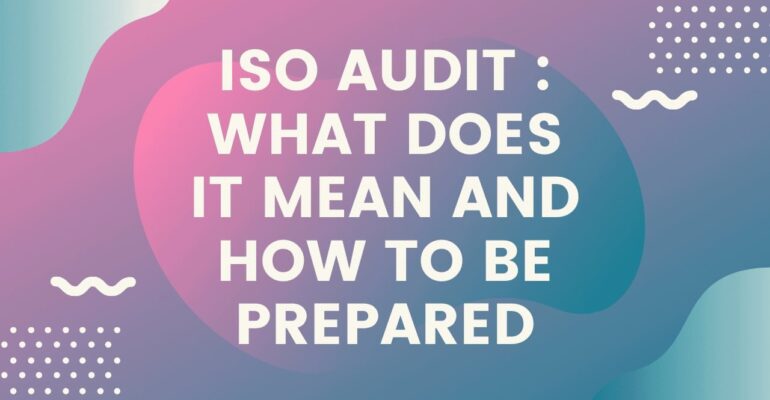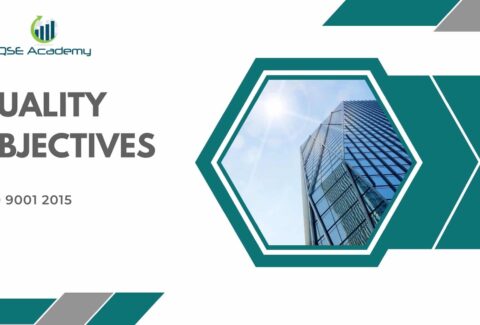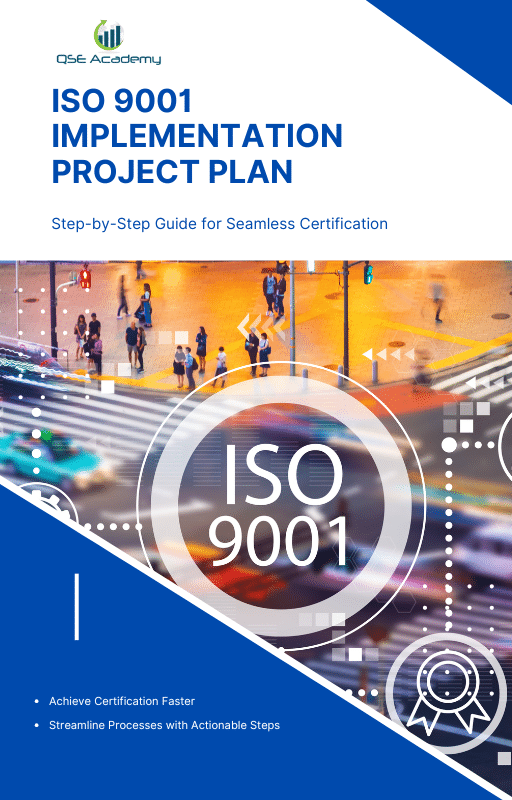ISO-revision: Vad innebär det och hur man förbereder sig
Introduktion
ISO standards are globally recognized frameworks that ensure organizations meet specific requirements for quality, safety, efficiency, and other operational aspects. These international standards are pivotal in maintaining high levels of performance and fostering trust among stakeholders. An ISO audit is a critical process that helps organizations verify their compliance with these standards. Understanding ISO audits is essential for organizations aiming to achieve or maintain ISO certification.
This article aims to provide a comprehensive overview of ISO audits, including their meaning, types, processes, and preparation strategies. By understanding these aspects, organizations can better navigate the audit process, ensuring they meet the required standards and continuously improve their operations.
1. Understanding ISO Audits
Definition of an ISO Audit
An ISO audit is a systematic, independent, and documented process for obtaining audit evidence and evaluating it objectively to determine the extent to which audit criteria are fulfilled. These audits can be internal or external and are essential for assessing an organization’s adherence to ISO standards. The main types of ISO audits include internal audits, external audits, certification audits, surveillance audits, and re-certification audits. Each type serves a specific purpose in the continuous improvement and compliance verification of the organization’s management systems.
Objectives of ISO Audits
The primary objectives of ISO audits are to ensure compliance with relevant ISO standards, identify areas for improvement, and enhance organizational performance and credibility. ISO audits help organizations identify gaps in their processes, ensure that they are following best practices, and provide a basis for continuous improvement. By meeting these objectives, organizations can maintain high standards of quality and efficiency, thereby improving their competitiveness in the market.
Key ISO Standards Subject to Audits
Common ISO standards subject to audits include ISO 9001 (Quality Management Systems), ISO 14001 (Environmental Management Systems), and ISO 45001 (Occupational Health and Safety Management Systems). Each standard has specific requirements and focus areas that the audit will address. For instance, ISO 9001 focuses on customer satisfaction and process improvement, ISO 14001 emphasizes environmental impact and sustainability, and ISO 45001 centers on workplace safety and employee well-being.
2. Types of ISO Audits
Internrevisioner
Internal audits are conducted by the organization’s own staff or by an internal audit team. The purpose of these audits is to assess the effectiveness of the management system, identify non-conformities, and ensure continuous improvement. Internal audits provide a valuable opportunity for organizations to review their processes and make necessary adjustments before undergoing external audits.
Expand more
Extern revision
External audits are conducted by independent third-party auditors. These include certification audits, surveillance audits, and re-certification audits. Certification audits are initial assessments to determine if an organization meets the ISO standard requirements for certification. Surveillance audits are periodic reviews conducted to ensure ongoing compliance, while re-certification audits occur at the end of the certification cycle to renew the certification.
Third-Party Audits
Third-party audits involve the use of independent, accredited certification bodies to conduct the audit. The role of third-party auditors is to provide an objective assessment of the organization’s compliance with ISO standards. The benefits of third-party audits include enhanced credibility and impartiality, as these audits provide an unbiased evaluation of the organization’s management system.
Certification and Recertification Audits
ISO standards that require certification necessitate a specialized certification audit. When aiming for certification for a standard like ISO 27001, a certification body will conduct an audit and grant a certificate of compliance that remains valid for three years. As a result, your organization commits to maintaining the processes, product controls, and systems encompassed by the certificate. In the case of ISO 27001, you are obliged to uphold your information security management system for three years. The initial certification audit comprehensively evaluates the ISMS, concentrating on policies and procedures. Following this, two successive years of surveillance audits occur, which are slightly less stringent than the certification and recertification audits. Throughout ISO certification audits, as well as audits in general, it is crucial to prioritize document control.
Övervakningsrevisioner
Surveillance audits are a crucial part of the ISO certification process as they ensure that an organization continues to meet the requirements of the ISO standard after the initial certification audit. These audits serve as a way to monitor the organization’s ongoing compliance and commitment to maintaining the processes, controls, and systems outlined in the certification.
Unlike the initial certification and recertification audits, surveillance audits are conducted annually or biennially, depending on the requirements of the ISO-standard. They are slightly less stringent in nature but still play a vital role in assessing the organization’s adherence to the standard over time.
During surveillance audits, auditors will review the organization’s documented policies and procedures, as well as observe how these are implemented in practice. They will assess if any changes or updates have been made to the processes or systems, and if so, whether these changes align with the requirements of the ISO standard.
One important aspect that should always be prioritized during ISO certification audits, including surveillance audits, is document control. This refers to the management and control of documentation related to processes, procedures, records, and other relevant documents. Proper document control ensures that the organization has up-to-date, accurate, and accessible information, making it easier to demonstrate compliance during audits.
To ensure successful surveillance audits, organizations should follow these key steps:
- Maintain Document Control: As mentioned earlier, document control is crucial during surveillance audits. It is essential to keep all documentation up-to-date, accurate, and easily accessible. Regularly review and update your documented policies and procedures to ensure they align with the requirements of the ISO standard. Implement a robust document control system that tracks any changes, revisions, or updates made to documents.
- Genomföra internrevisioner: Regular internal audits are an effective way to assess your organization’s compliance with the ISO standard in between surveillance audits. These audits should be conducted by trained internal auditors who are knowledgeable about the ISO requirements. Internal audits help identify any non-conformities, gaps, or areas for improvement, allowing you to address them before the surveillance audit takes place.
- Communicate with Employees: It is vital to communicate the importance of ISO compliance to all employees within the organization. Ensure that everyone understands their roles and responsibilities in meeting the ISO requirements. Conduct regular training sessions or workshops to enhance awareness and knowledge of the ISO standard. Encourage open communication and create a culture of continuous improvement, where employees are encouraged to report any non-conformities or potential issues.
- Korrigerande åtgärder: If any non-conformities or areas for improvement are identified during an internal audit or surveillance audit, it is important to take corrective actions promptly. Corrective actions involve addressing the identified non-conformities and implementing effective solutions to prevent their recurrence.
3. The ISO Audit Process
Preparation Phase
The preparation phase involves conducting a gap analysis to assess the current state of the organization’s processes against ISO standards. This helps identify areas that need improvement. Developing a detailed audit plan is crucial, including setting objectives, defining the audit scope, and scheduling activities. Selecting a competent audit team with the necessary skills and experience is also essential to ensure a successful audit.
Execution Phase
During the execution phase, the audit begins with an opening meeting to introduce the audit team, explain the audit process, and set expectations. On-site audit activities include conducting interviews, making observations, and reviewing documents to collect evidence of compliance. Identifying non-conformities involves comparing the collected evidence against the standard requirements and categorizing any deviations found.
Reporting Phase
After the on-site activities, the audit team analyzes the findings to identify patterns and trends. The audit report is then prepared, summarizing the findings, non-conformities, and recommendations. The closing meeting is conducted to discuss the audit findings with the organization’s management, providing an opportunity for questions and clarifications.
Aktiviteter efter revisionen
Post-audit activities include developing and implementing corrective action plans to address identified non-conformities. Follow-up audits may be conducted to verify the effectiveness of these corrective actions. Continuous improvement initiatives are also essential, using the audit results to drive ongoing enhancements in the management system.
4. Preparing for an ISO Audit
Understanding the Standard Requirements
A thorough understanding of the specific ISO standard is crucial for effective preparation. This involves familiarizing with the key areas of focus, such as quality management in ISO 9001, environmental management in ISO 14001, or occupational health and safety in ISO 45001. Organizations should ensure that their processes and documentation align with these requirements.
Conducting a Pre-Audit Assessment
Conducting a pre-audit assessment involves an internal review of processes and documentation to identify potential non-conformities. This step helps organizations address issues before the actual audit, ensuring that they are well-prepared. The pre-audit assessment should be thorough and systematic, covering all relevant aspects of the management system.
Training and Awareness
Training employees on ISO standards and audit processes is essential for a successful audit. Employees should understand their roles and responsibilities in maintaining compliance and be aware of what to expect during the audit. Creating awareness and ensuring involvement at all levels of the organization helps foster a culture of quality and continuous improvement.
Document Control and Management
Effective document control and management are critical for ISO audit preparation. Organizations must ensure that all required documents are up-to-date, accessible, and accurately reflect current practices. Maintaining accurate records and evidence of compliance helps demonstrate adherence to ISO standards during the audit.
5. Common Challenges in ISO Audits
Resistance to Change
One common challenge in ISO audits is resistance to change from employees. Change can be unsettling, and some employees may be reluctant to adopt new processes or procedures. Overcoming resistance involves effective communication, training, and involving employees in the change process. Strategies for fostering a culture of quality include providing clear explanations of the benefits of ISO compliance and recognizing and rewarding efforts to improve.
Lack of Resources
Ensuring adequate resources for audit preparation can be challenging, especially for smaller organizations. This includes financial resources, time, and personnel. Balancing audit preparation with regular operations requires careful planning and resource allocation. Organizations should prioritize critical areas and ensure that key personnel are available to support the audit process.
Communication Issues
Clear and effective communication is vital throughout the audit process. Miscommunication can lead to misunderstandings, errors, and delays. Addressing language and cultural barriers is particularly important in multinational organizations. Ensuring that all parties understand the audit process, requirements, and expectations helps in maintaining a smooth and efficient audit.
6. Tips for a Successful ISO Audit
Effective Planning and Organization
Developing a detailed audit plan is essential for a successful ISO audit. The plan should include specific objectives, scope, and a schedule of activities. Assigning responsibilities and ensuring accountability among team members helps in managing the audit process effectively. Proper planning and organization ensure that the audit covers all necessary areas systematically.
Engaging Top Management
Involving top management in the audit process is crucial for demonstrating leadership and commitment to quality. Top management should actively participate in the audit, providing support and resources as needed. Their involvement helps in fostering a culture of quality and ensuring that the organization remains focused on continuous improvement.
Kontinuerlig förbättring
Using audit findings to drive continuous improvement is a key aspect of ISO compliance. Organizations should implement corrective actions to address non-conformities and monitor their effectiveness. Continuous improvement initiatives should be documented and reviewed regularly to ensure ongoing enhancements in the management system.
Utnyttja teknik
Using software tools for document management and audit tracking can streamline the audit process. Digital solutions help in organizing documents, tracking audit activities, and maintaining records. Leveraging technology improves efficiency and accuracy, making the audit process more manageable and effective.
7. Case Studies and Examples
Success Stories
Examining success stories from organizations that have effectively undergone ISO audits provides valuable insights. These examples highlight the benefits of thorough preparation, effective communication, and continuous improvement. Organizations that have successfully achieved ISO certification demonstrate the importance of commitment and teamwork in the audit process. These success stories serve as inspiration for other organizations looking to undergo ISO audits.
One such example is Company X, a manufacturing company that implemented ISO 9001 for quality management systems. They started by conducting a gap analysis to identify areas of improvement and then developed a detailed action plan to address those gaps.
The key to their success was the involvement of top management in the audit process. The CEO of Company X actively participated in the audit, showing commitment to quality and setting a tone of accountability throughout the organization. This involvement motivated employees to actively engage in the audit process, resulting in a successful ISO certification.
Another noteworthy success story is Company Y, a service-based organization that implemented ISO 27001 for information security management systems. They recognized the importance of continuous improvement and used audit findings to drive changes within their organization. They carried out regular internal audits to monitor the effectiveness of their information security controls and implemented corrective actions whenever necessary.
Company Y also leveraged technology to streamline their audit process. They used software tools to manage their documents, track audit activities, and maintain records. This not only improved the efficiency and accuracy of their audit process but also facilitated easy access to audit documentation during external audits.
Challenges and Solutions
Case studies of common challenges faced during ISO audits and the strategies used to overcome them offer practical lessons. Examples include handling resistance to change, managing limited resources, and ensuring clear communication. These case studies illustrate how organizations can address these challenges and achieve successful audit outcomes. Handling resistance to change is a common challenge faced during ISO audits. When organizations implement new processes and procedures as part of the ISO certification requirements, employees may resist these changes due to fear of the unknown or feeling overwhelmed by the additional responsibilities.
To overcome this challenge, organizations can focus on effective communication and involvement of employees throughout the audit process. Transparent communication about the benefits of ISO certification and how it aligns with the organization’s goals and values can help address any concerns and create a sense of ownership among employees. Additionally, involving employees in the development and implementation of new processes can increase their buy-in and commitment to the changes.
Managing limited resources is another challenge that organizations may face during ISO audits. Implementing ISO standards often requires additional financial resources, staff time, and infrastructure. Many organizations, especially small and medium-sized enterprises, may struggle with allocating these resources while maintaining day-to-day operations and productivity.
To overcome this challenge, organizations can prioritize and plan resource allocation effectively. Conducting a thorough analysis of current resources and identifying gaps can help in developing a realistic plan. It is important to involve key stakeholders in resource planning and consider alternative solutions such as outsourcing certain audit activities, leveraging technology, or seeking external assistance. Proper planning and coordination can ensure that resources are utilized efficiently and effectively during ISO audits.
8. Benefits of ISO Audits
Enhancing Credibility and Reputation
ISO certification plays a crucial role in elevating an organization’s credibility and reputation to new heights. By obtaining ISO certification, an organization showcases its unwavering dedication to ensuring top-notch quality, safety, and environmental management practices, thereby fostering a strong bond of trust and reliability with both customers and stakeholders. The merits of ISO certification extend beyond mere compliance, as it opens up a plethora of lucrative market opportunities and greatly enhances overall customer satisfaction, ultimately leading to sustainable business growth and success. ISO certification provides organizations with a competitive edge in the marketplace. It sets them apart from their competitors by demonstrating a commitment to quality and excellence. Customers are increasingly looking for suppliers and partners who have obtained ISO certification, as it gives them confidence that the organization has met rigorous international standards.
Furthermore, ISO certification improves customer satisfaction. ISO standards are designed to focus on meeting customer requirements and providing high-quality products and services. By implementing these standards, organizations can enhance their processes and deliver better customer experiences. This, in turn, leads to increased customer loyalty and repeat business.
Finally, ISO certification promotes continuous improvement within the organization. ISO audits highlight areas for improvement and provide feedback on current processes and practices. This feedback helps organizations identify and address any gaps or weaknesses, leading to ongoing improvements in
Moreover, ISO certification enhances the organization’s reputation among its stakeholders, including investors, regulators, and the public. It shows that the organization has taken the necessary steps to ensure ethical and responsible business practices. This can result in increased investor confidence and improved relationships with regulatory bodies.
ISO certification also opens up new business opportunities for organizations. Many government contracts and tenders require ISO certification as a prerequisite. By obtaining ISO certification, organizations can access these lucrative contracts and expand their customer base.
Improving Operational Efficiency
ISO audits help organizations streamline their processes and reduce waste. By identifying areas for improvement, organizations can enhance their operational efficiency and overall performance. This leads to cost savings, better resource utilization, and higher productivity. ISO audits provide organizations with a systematic approach to identifying areas where processes can be improved. By assessing current procedures, organizations can identify bottlenecks, redundancies, and inefficiencies that may be hindering their operational efficiency.
ISO audits encourage organizations to adopt a continuous improvement mindset. This means constantly seeking ways to improve processes, even after certification is achieved. By regularly evaluating and analyzing performance metrics, organizations can identify new opportunities for improvement and adapt their processes accordingly.
Improved operational efficiency not only benefits the organization but also has a positive impact on employees. Streamlined processes and reduced waste mean employees can focus on value-added tasks and spend less time on non-essential activities. This can lead to higher job satisfaction, increased productivity, and improved overall morale within the organization.
Streamlining processes is essential for organizations looking to optimize their performance. ISO audits can help organizations identify and eliminate unnecessary steps, automate tasks, and implement best practices. This not only improves the overall efficiency of the organization but also enhances the quality of products and services delivered to customers.
In addition to streamlining processes, ISO audits also focus on reducing waste. Waste can take various forms, including overproduction, defects, excessive inventory, and unnecessary motion. By identifying and eliminating waste, organizations can reduce costs, increase productivity, and improve their bottom line.
Ständiga förbättringar
ISO audits drive continuous improvement by providing a structured framework for identifying and addressing non-conformities. Organizations can use audit results to implement corrective actions and monitor their effectiveness. This fosters a culture of continuous improvement, ensuring that the organization remains committed to maintaining high standards.
Slutsats
Understanding the ISO audit process is essential for organizations seeking certification. The audit involves thorough preparation, systematic data collection, comprehensive reporting, and continuous improvement. Each step is crucial for ensuring compliance with ISO standards and maintaining the effectiveness of the management system.
Organizations should embrace ISO audits as a key component of their quality management system. By understanding and implementing the
principles of ISO standards, they can ensure continuous improvement and sustained compliance. The ongoing benefits of maintaining ISO certification include enhanced credibility, improved operational efficiency, and a strong commitment to quality.
Letar du efter fler resurser om ISO 9001?
Om du tyckte att den här artikeln var till hjälp kan du utforska våra premiumresurser som är utformade för att hjälpa dig att uppnå ISO 17025-certifiering på ett effektivt sätt:
- 📦 Komplett dokumentationspaket för ISO/IEC 9001 2015: Få alla viktiga mallar och dokument du behöver för en snabb och enkel implementering.
- 🎓 Onlinekurs om ISO/IEC 9001 2015 : Delta i vår omfattande utbildning för att lära dig de viktigaste begreppen och de praktiska stegen mot certifiering.
- 📋 Checklista för ISO/IEC 9001 2015: Ladda ner vår detaljerade checklista för att säkerställa att du har täckt varje steg i processen.
Dessa resurser är skräddarsydda för att tillgodose dina behov och säkerställa en smidig certifieringsresa. Utforska dem redan idag och kom ett steg närmare framgång!














